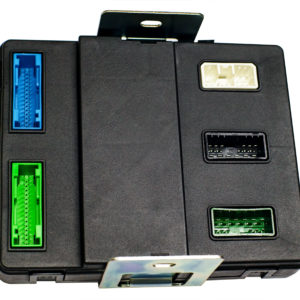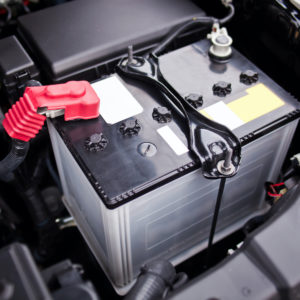Your vehicle’s electrical system is connected to the battery with the use of battery cables and terminal ends. Battery terminals are the small cylindrical metal prongs that stick out from your vehicle battery. Terminal ends are the circular pieces of metal that wrap around battery terminals and connect the terminals to the cables. The terminal ends act like a clamp. They typically have a bolt that secures terminal ends around the terminal, preventing the battery cable from coming loose during vehicle operation.
The battery is responsible for powering several critical vehicle components, including the starter motor, lights, radiator fans, and wipers, among many others. If the battery terminals or terminal ends become faulty, then your vehicle can have a loose or corroded battery connection, which can cause critical electronics to malfunction.
Bad Faulty Terminal Ends Symptoms
Caution: Never work around a car battery without eye protection. Batteries can explode, which could result in severe eye injuries if you’re not wearing proper eye protection.
A loose battery connection in your car might seem like an inconsequential issue but, it can cause a wide range of problems, such as the following:
Flickering Headlights or Electronics
A loose terminal on your car battery would cause flickering or dim headlights. Headlights need a consistent flow of power from the battery to stay on. Fluctuations in current flow because of a loose or faulty terminal end will impact your headlights’ functionality. Similarly, your vehicle’s infotainment system and dashboard lights can also dim. The speakers can also sound weak because of a loose terminal.

Hot Ground Wire Cable
Many electrical components in a vehicle will have a ground wire that connects to the vehicle’s chassis. This ground wire gives the circuit access to a negatively charged object that will absorb excess voltage. The battery has a ground wire that connects its negative terminal to the vehicle’s chassis. If the terminal end isn’t secured onto the battery terminals, then the ground wire cable can heat up as a result of the increased resistance.
Difficulty Starting the Engine
Can a loose or bad terminal end cause a car not to start? It definitely can. A terminal end that isn’t securely tightened around a battery terminal can prevent the starter motor from cranking at the necessary speed and duration.
Corrosion on Battery Terminal
Battery acid is highly corrosive. When the battery wears out, the terminal ends can corrode because of leaking acid. Corroded battery terminal ends can also be caused by a leaking battery. If you find signs that your vehicle’s battery terminals are corroding because of acid, you can neutralize the acid and prevent rust from forming by cleaning it with water and baking soda.
Some of these issues can be fixed by simply tightening the terminal end bolts. Remember that battery terminal ends need to be tight enough so that they can’t be moved by hand. Note, however, that corrosion on battery terminals can still happen even if the terminals are tight.
The terminal ends can sometimes be corroded or damaged because of a leaking battery or corroded battery terminal. You can usually tell when a terminal is corroded when you see a whitish or greenish deposit on the metal. Corroded terminal ends can negatively affect current flow because rust isn’t a good conductor of electricity. If this is the case, then you might need to replace the terminal end.
A faulty battery terminal end might just be one of the many electrical issues present in your vehicle. If fixing the faulty terminal end doesn’t fix the issue, then other components like the alternator or ignition system could be to blame.


You can watch the video below to get an idea how to properly replace battery terminals:
Any information provided on this Website is for informational purposes only and is not intended to replace consultation with a professional mechanic. The accuracy and timeliness of the information may change from the time of publication.



























